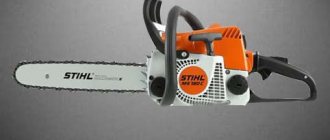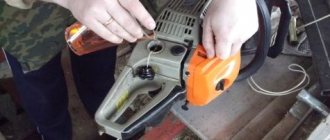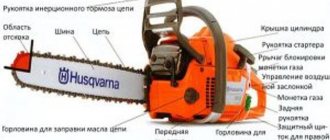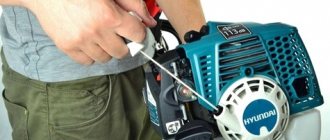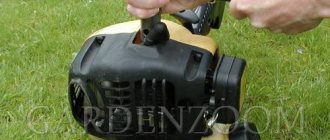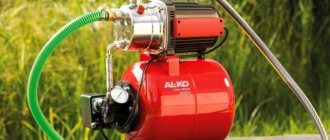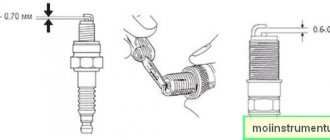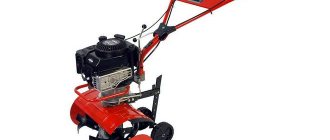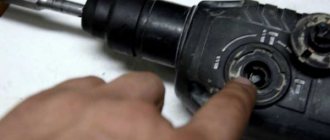Lubricating fluid is one of the main components that ensures the performance of a car, so its level and condition must be carefully monitored. Having discovered signs of oil leakage from the engine or gearbox, you must immediately identify and eliminate the cause that caused the problem. This will allow you to avoid serious troubles associated with the failure of the power unit directly during the trip and will postpone the period of forced expensive repairs for a long time.
Signs of an oil leak
Oil leakage from a car’s power unit is a common phenomenon that is well known to many drivers. The engine design itself contributes to the occurrence of this problem - it uses many sealing elements (gaskets or seals), through which lubricant flows. Signs of a fluid leak, in addition to a decrease in its level, which can be determined using a dipstick, appear in the form of oily drops, streaks and stains on parts or under the bottom of the car. Problems in the lubrication system are also indicated by the appearance of gray (blue) smoke from the exhaust pipe or from under the hood of the car.
Photo examples
The engine is covered with a black oil coating. Drops of oil appear at the bottom of the engine. Transmission parts are covered with oil stains. Oil stains appear on the engine body. The lower part of the engine becomes oily. Oil stains under the bottom of the car indicate a leak.
Carburetor Floods on Trimmer Reasons
What to do when gasoline trimmers do not start?
A gasoline trimmer is a surprisingly useful tool with which you can mow not only a small clearing in front of your house, but also an entire large lawn. Unfortunately, there is nothing endless in this world, and therefore you may encounter the fact that gasoline trimmers do not start.
Some reasons
It often happens that users of this type of car try to “save money” by filling the tank not with fuel with a regular octane rating, but with something incomprehensible that has been sitting in a plastic canister for almost a decade.
Signs and causes of engine oil leaks
First of all, it is important to remember that before each trip, the driver needs to conduct a visual inspection of the engine compartment. It will not be superfluous to look under the engine crankcase and also pull out the oil dipstick.
This approach will help to identify and eliminate the problem in a timely manner without serious consequences. In most cases, engine oil leaks are observed at the junctions of engine components and components. These include:
- valve lid;
- cylinder head;
- engine sump;
- crankshaft oil seal flange;
- oil filter.
What can cause an oil leak from the engine?
It is impossible to answer this question unambiguously, since in each specific case this problem may be caused by a specific malfunction of one or another mechanism.
Nevertheless, there is a list of the most common breakdowns that lead to depressurization of the engine lubrication system. Namely:
- wear and loss of elasticity of sealing elements;
- increased wear of engine working elements;
- mechanical damage to motor elements.
The first and, perhaps, the most common cause of oil leaks from internal combustion engines is wear of the seals. After prolonged use, oil seals and gaskets lose their properties and begin to leak oil. The problem is solved by replacing them.
It is also worth noting that failure of the sealing elements could occur due to a discrepancy between their performance characteristics and the stated requirements. In this case, we are talking about various fakes and handicraft analogues of factory rubber goods.
The vehicle's mileage may also create favorable conditions for the problem presented to occur. For example, increased wear of piston rings leads to increased pressure in the engine crankcase due to the appearance of so-called crankcase gases. This unfavorable situation can cause the engine pan gasket and valve covers to leak.
Mechanical damage to the motor should not be discounted.
Business date, meeting
Motor oil is a special mixture of solvent and friction-reducing additives. They form a certain viscosity and do not allow the composition to thicken when the temperature drops. Typically, oils are specially dyed in different colors: green, red or blue. This keeps them from getting confused.
Keep in mind that they may vary in composition, so gas trimmer oil will be labeled "garden grade". Additionally, it may still be labeled differently: "2T" or "4T". The first is two-stroke oil, which is poured into the corresponding engine. And the second is intended for pouring into the crankcase.
Where can engine oil leak from?
If during the next daily inspection it turns out that the oil level is significantly below the maximum mark, you should seriously look for the problem. First of all, it is important to determine where the leak is located.
First of all, it is advisable to pay attention to the accessible engine components. One of them is the valve cover.
From under the valve cover
A leak in the valve mechanism may result in oil leakage from the engine lubrication system. Often, this problem is signaled by a characteristic burning smell from under the engine exhaust manifold.
In this case, it cannot be said with a high degree of probability that replacing the gasket will solve the problem. The occurrence of the presented malfunction may be associated with excessive pressure in the engine lubrication system.
This situation can be caused, for example, by a malfunction of the so-called pressure reducing valve.
Crankshaft oil seal
What could have caused the breach of its tightness?
Let us arrange the most probable causes of this malfunction in a certain sequence, starting with the most frequent:
- the operational resource has been developed;
- failure in the crankcase ventilation system;
- defective components;
- unscrupulous repairs.
Oil leak between engine and gearbox
Do not forget that the clutch flywheel housing also contains an oil seal, which sometimes makes itself felt, although extremely rarely. To verify the presence of such a malfunction, you will have to look under the bottom of the car.
In this case, it is best to drive the car into an inspection hole or so-called overpass. The presence of a leak will be indicated by an oily surface of the clutch housing and gearbox housing. To replace the oil seal, you will need to dismantle the gearbox.
Let us focus our attention on the reasons for this unfavorable phenomenon. Among them are:
- mismatch of lubricant viscosity;
- failures in the crankcase ventilation system;
- loss of elasticity of rubber goods;
- poor quality components.
Oil filter gasket
The oil filter seal can also be the culprit for an oil leak. So, during the next scheduled filter replacement, it could simply be tightened, and this is unacceptable. With such repairs, unfortunate oil leaks may appear over time.
It is also worth mentioning the fact that after each filter replacement, all associated rubber goods must be replaced. If this is not done, there is a high probability that oil formations will soon appear at the filter connection site.
In a particular case, oil from the engine lubrication system may be squeezed out due to malfunctions in the operation of the VKG system.
Engine crankcase problems
A frequent cause of engine oil leaks can be violations of the crankcase ventilation system. For the most part, owners of fairly used cars face a similar problem.
The fact is that as the CPG wears out, exhaust gases begin to accumulate in the engine crankcase. With a working crankcase ventilation system, excess pressure would be vented into the engine intake manifold. But it also happens that after prolonged use, and in the absence of proper care, the elements of the system become clogged.
This state of affairs leads to the fact that the gases have nowhere to go, and they begin to look for the most vulnerable places, which are played by various sealing elements.
Preparing the correct fuel mixture
Before you start running in a new lawnmower engine, you also need to properly prepare the fuel mixture. As is known for two-stroke engines, it is prepared from special two-stroke oil and gasoline, taken in certain ratios. You can find out the proportions from the instructions supplied with the tool or on the lubricant label. From the instructions you will also learn the recommended type of fuel, as well as the recommended type of engine oil.
Prepare fuel in small quantities, enough for one mowing of grass. Use special plastic canisters or separate glass or metal containers for fuel. It is best to draw the oil with a medical syringe.
When getting ready to test out a new lawn mower, many are faced with the problem of preparing the fuel mixture. And the reason for this is discrepancies in the tool manufacturer’s instructions and in the motor oil manufacturer’s instructions. The first ones recommend a proportion of 1:25. The second recommend 1:50. Who to believe? How to proceed?
According to experts, if manufacturers write a ratio of 1:25 or 1:30 in the instructions for a brush cutter, then most likely it is either a cheap tool with poor cooling, or the manufacturer does not know what kind of oil, the consumer will add. But here you need to understand that excess lubricant does not have the best effect on the performance of the trimmer. Excess oil does not burn out completely when the engine is running. It cokes and clogs the cylinder and piston.
What to do in this situation when running in a new tool? The ideal option would be to purchase exactly the oil recommended by the manufacturer of the lawn mower. In the case of run-in engines, when it is not possible to purchase the recommended oil, it is best to purchase a good Husqvarna two-stroke oil for the same name gas-powered tool. It's not cheap, but it lasts a long time. It must be mixed as written in the instructions on the can.
Remember, it is best to use the proportion provided by the oil manufacturer. But whether the proportion written on the braid is appropriate is better to find out through experiment. If, with the proportion recommended by the trimmer manufacturer, the engine is snotty with oil and smudges are visible on it, then the proportion needs to be increased.
How to determine the location of the leak?
Each vehicle may have two crankshaft seals, front and rear. The former fail much more often, while the latter usually have the same service life as the entire car.
- If there are traces of engine fluid on the rear of the engine, check the integrity of the oil pan and transmission module. If the transmission block and drip pan If the oil is intact, replace the rear oil seal.
- Lubricant may leak from the gearbox. To check this, remove any leaked oil and pour it into water. If the gearbox seal is worn, the lubricant will immediately spread over the surface of the fluid. Motor oil should remain in droplet form when in contact with water.
What are the dangers of squeezing out oil?
The main consequence is oil starvation in the engine. Lack of lubrication leads to strong friction of internal components and their rapid wear. A lack of working fluid can cause the machine to stop.
How much oil can leak?
The amount of oil leaking from under the crankshaft oil seal depends on the degree of wear of this part (from a few drops to liters per 1000 km). If you do not add fluid to the power unit, all the lubricant may run out.
Front oil seal
The main consequence of untimely replacement will be oil leakage and contamination of the crankcase of the power unit. This is due to the fact that the lubricant will attract wear products. This problem can break the timing belt and damage the valves.
In this case you will need:
- replace the broken timing belt;
- replace the cylinder head gasket;
- replace the valves and grind them in;
- dismantle and grind the cylinder head of the internal combustion engine, since after replacing the gasket it will not be flat and will not come into contact with the engine.
Please note that regular use of a vehicle with damaged seals will damage the pistons. Minor faults will not cause major problems, but the piston may puncture the valve, requiring major repairs.
- Broken or faulty piston;
- the crankshaft valve is damaged;
- all liners placed in a circle;
- engine crankcase gasket;
- cylinder head mounting bolts (must be tightened in accordance with the sequence and torque specified in the service instructions);
- oil pan gasket.
You will also need to add engine oil and antifreeze to the cooling system.
Rear oil seal
If the crankshaft rear oil seal is worn and damaged, it must be replaced:
- remove the drive unit;
- dismantle the clutch mechanism with the drawbar;
- remove the flywheel (removal of these components is required to access the oil seal).
Regular operation of a car with a damaged part will lead to the fact that engine oil can flood the clutch system, as a result of which all the frictional properties of the device will be impaired.
This will lead to the following problems:
- a sharp decrease in engine power;
- increased fuel consumption (when you press the gas pedal, the car will move at the same speed, but gasoline consumption will be higher);
- The driver will need to lubricate the engine regularly.
Is it possible to drive with a leak?
It is recommended not to use a vehicle with a leaking shaft seal, or at least limit it to the latter. Be careful at this point and set aside the two square head screws. These items are not firmly in the holder and may fall out.
If the gasket remains on the cylinder body or block, remove it.
Varieties
The oil that is poured into the engine may vary depending on the preparation method. By this criterion:
- Mineral - this type is obtained by processing petroleum products;
- Synthetic - obtained from gas processing or synthesis;
- Semi-synthetic - this type has more advanced characteristics due to the introduction of synthetic-based components.
Brush cutting oil refers to compositions intended for use in air-cooled engines with a combustion chamber with a volume of 50-200 cubic centimeters. In addition, any two-stroke oil may differ from analogues in additives, which gives it certain additional characteristics. They are one of these types.
- Anti-clothing. The main purpose of the oil will be to reduce wear on parts during operation of the device.
- Antioxidant. They prevent oxidation and allow the oil to maintain its effectiveness for a long time.
- Rust resistance. Their task is to prevent corrosion of engine parts.
- Friction modifiers. These additives can significantly reduce the coefficient of friction.
Recently, when purchasing oil for diluting with gasoline, users are often faced with the fact that special letter abbreviations are used in the canisters. These designations are made as part of the API classification. Let's look at what types of oils exist according to this.
- And it is used for air-cooled brush cutters . The engine capacity is not more than 50 cubic centimeters. It can be used not only for mowers, but also for mopeds, lawn mowers and other equipment. This is the optimal solution for a gas trimmer.
- TV is used to refuel a chainsaw , scooter, moped or motorcycle with an engine capacity of no more than 200 cubic centimeters. It can also be used to refill gas trimmers.
- TC is suitable for diluting with gasoline and pouring into a snowmobile, motorcycle and other equipment.
- TD is designed for refueling boats , yachts and gyroscopes.
READ Stihl Ms 180 How Much Oil Is In Gasoline
But in addition to this classification, other letters are often found, such as FA-FD. It should be noted that API is an American standard used in Europe. But there is a discrepancy between European and emissions standards. For this reason, additional labels should also be considered.
- FA can be used in countries where the law requires minimum exhaust emissions. Light smoke may be generated when using oil labeled as such.
- FB - can be used in countries where smoke and gas restrictions are much stricter. In this case, smoke is unlikely to be released.
- FC - Transparent smoke appears that the human eye cannot see.
- FD is a special category of oils for two-stroke engines; they do not create smoke at all. They have improved chemical properties. Typically this oil is used for mixing with gasoline and subsequent refueling of boats and yachts.
In addition, there are two other categories of oil:
- Selfmix
- Premix
In the first case, this will mean that you need to do self-mixing, which does not require shaking, and in the second case, you will need to do this.
How to eliminate oil leaks from crankshaft seals?
Using a screwdriver, remove the crankshaft oil seal from the holder. The new part is treated with motor fluid and externally mounted in a holder. When performing this action, the device must be directed with its working edge towards the centering handles. The working part of the product is distinguished by the presence of an elastic element.
How to replace the front oil seal?
Using a hammer, lightly press the crankshaft rear oil seal through the pin until it stops.
- After replacing the oil seal, check the oil seal on the handle. If the gasket is excessively compressed or worn, replace it. Before installation, the product should be lubricated with silicone sealant, and for greater convenience it is recommended to attach it to the bracket.
- The handle with the gasket is assembled. To do this, tighten all the mounting screws of the unit without screwing them in completely.
- A special pin is installed on the crankshaft. During operation, the handle must be centered relative to the shaft.
- The screws securing the handle to the cylinder module must be lightly tightened. Then they are clamped crosswise along the entire length.
- Tighten the bolts that secure the bracket to the crankcase. All other components and parts are assembled in reverse order.
- The Sunday Garage channel made a video that shows in detail the process of replacing the rear crankshaft oil seal using the example of a Renault Logan.
- If the user replaces the seal and the leak problem persists, the problem is due to improper installation or use of a faulty part. To fix the problem, you need to disassemble and reassemble the parts. If this does not solve the problem, remove the old packing and replace it with a new one. new.
- The procedure for flushing the engine is as follows:
First, drain the used oil. To do this, place a container under the drain hole and unscrew the plug with a wrench. It is advisable to drain the old lubricant on a warm engine, since in this form there will be more fluid. However, be careful not to get burned.
How to replace the rear oil seal?
The drain plug is screwed in and flushing oil is poured through the inlet into the engine.
Many new brush cutters, even those sold assembled, do not have lubricant on the rod shaft. As a result, it heats up, wears out, and a slight whistling rattle is gradually added to the sound of a running motor and vibration appears. To protect equipment from premature wear, just take 10 minutes and simply lubricate the shaft.
Let's start running in the lawn mower
After starting, do not rush to immediately break in the trimmer. Allow the engine to warm up at idle speed for 5 minutes. While warming up, adjust the air supply using the air damper lever so that the spool with fishing line or knife does not rotate. As soon as the tool has warmed up, we fully open the air supply by moving the corresponding lever to the “ON” position and squeeze the gas trigger 1/2 and hold for 20...30 seconds. Then we let off the gas and let the trimmer work for XX 30..40 seconds. We continue in this mode for 10…15 minutes. Then turn it off and let it rest for 15...20 minutes.
Having cooled the lawn mower, we continue to run in the engine according to the previous scheme. You need to start the trimmer when it’s hot, with the air damper already open. Try not to hold the gas for a long time, since the moving parts of the tool are only rubbing against each other. And do not let the engine idle for too long, as it may overheat.
The next stage is running in the gas scythe gearbox. To do this, you need to choose an area with soft young grass. We mow for 5...10 minutes with throttle adjustments at 1/2...2/3 of full throttle. Afterwards we take a break for 20…25 minutes. We repeat the cycle 3…4 times.
In general, running in the lawn mower according to the described algorithm is carried out until the fuel mixture in the tank is completely exhausted. After which the tool is ready for long-term work. During operation, monitor the temperature conditions of the gearbox and motor. They should not overheat.
Source
Disassembly and lubrication
First you need to disassemble the bar. In a conventional lawnmower, to do this, it is enough to disconnect it from the upper and lower gearbox.
If the scythe has a collapsible rod consisting of two parts, then this is even simpler. All you need to do is remove the coupling in the center and separate the halves.
If the scythe has already been working, then when examining the shaft, or shafts in the case of a collapsible rod, you can notice abrasions from the centering bushings. Such places need lubrication.
A small amount of lubricant should be squeezed onto a cloth or fingers and the shaft should be treated without skipping. It is applied in a thin layer, but everywhere. It is necessary to pay special attention to the slots, since they bear the highest load, especially when the scythe knife hits stones and other objects.
The lubricated shaft is inserted back into the forestay with a slight twist. This will ensure that some of the excess grease remains on the centering bushings where it should be. Rotation will also help the splines fit into their seat on the gearboxes.
If a straight brush cutter with a non-removable bar is being serviced, then it is simply attached back to the gearboxes. In the case of a two-piece rod, the short shafts are each inserted into its own half. After this, the parts of the rod are joined in the center. If their splines do not hit, then you can simply turn the lower gearbox by hand. Next, the docked rod is clamped back with a coupling.
If you use the lawn mower infrequently, this type of maintenance of the rod should be carried out every season. The lubricant used for CV joints withstands high temperatures well, which eliminates oil drips during long-term operation of the scythe. The same composition can also be used to lubricate gearboxes. It can be pressed into them with a syringe if the tube does not have a spout. The frequency of lubrication of gearboxes is higher than that of the shaft. Manufacturers usually recommend doing this every 5 engine hours.
